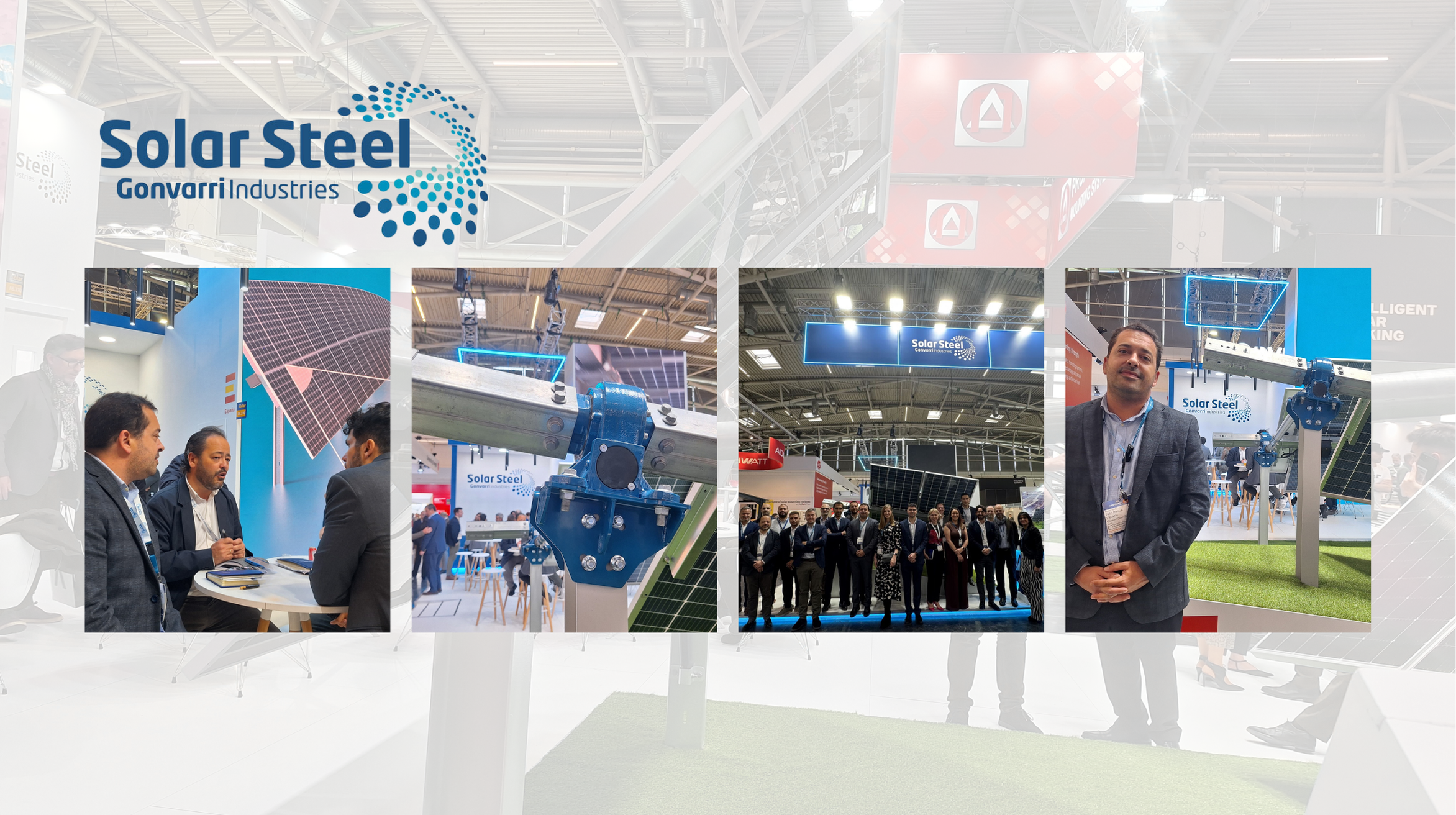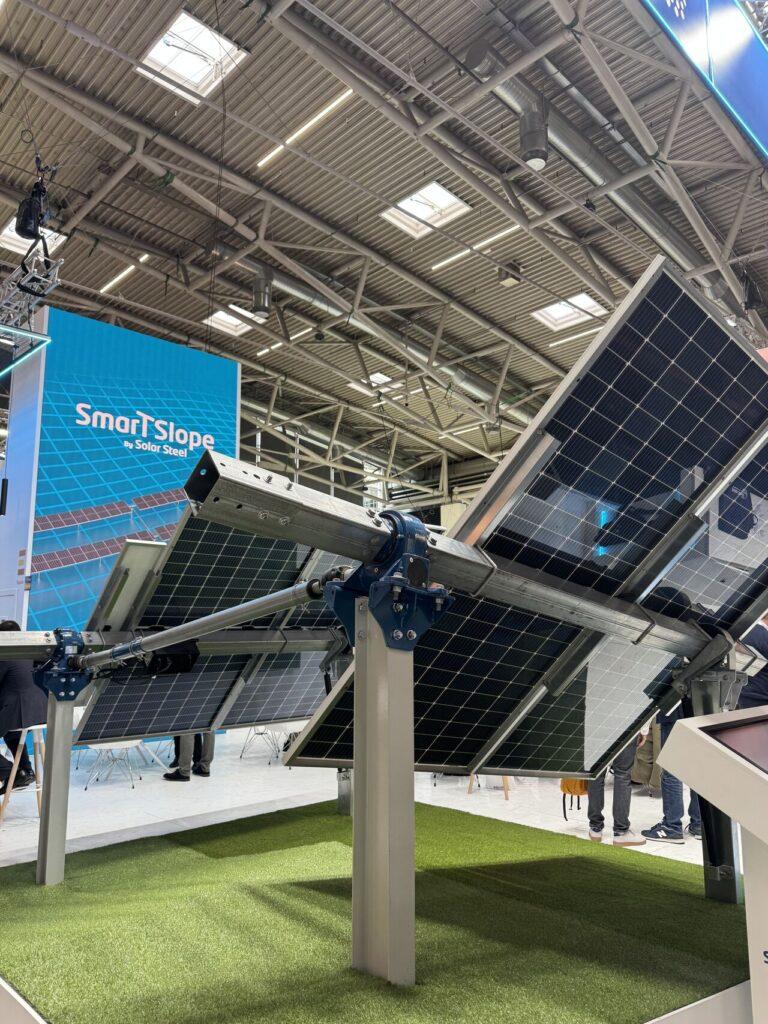With improvements in terrain adaptability, assembly optimization, and SmartSlope technology, the Spanish company is committed to leading the European market with customized technical solutions. “We listen to our customers to adapt to each project,” emphasizes Fernando Mico, Chief Business Development Officer of Solar Steel.

At the Intersolar Europe 2025 trade fair, held from May 7 to 9 in Munich, with the participation of 2,737 exhibitors from 57 countries and more than 107,000 professional visitors, Gonvarri Solar Steel presented the new generation of its 1P solar tracker, an evolution focused on structural efficiency and terrain adaptation.
“This is crucial in Europe, where the most favorable terrain is already occupied,” he added. The executive stated that the new 1P solar tracker was designed to meet the demands of today’s market: fewer components, faster assembly, and greater operational reliability.
Among the main improvements, Micó highlighted its increased rotation angle of up to 60 degrees and pre-assembly processes that reduce time and errors on site.

“We are on the fifth generation of the product, and we continue to reduce both CAPEX and OPEX for our clients, from structural design to the supply chain,” Micó noted. Regarding installation time, he noted that the new design “allows for faster grid connection and lower labor costs, which accelerates the return on investment.”
Regional growth and ad hoc solutions
Solar Steel aims to maintain its leadership in Spain and remain one of the leading manufacturers worldwide in the coming years. “The competition
is fierce, but we aim for continuous and stable growth. In 2024, we grew 21% compared to 2023, and although the market shows signs of maturity, we continue to invest in new developments,” Mico shared.
For his part, Juan Manuel Vizcaíno, the company’s Key Account Manager, highlighted the company’s customization approach: “We work very ad hoc. Each project has specificities, and we try to provide a tailored solution for each client.” Mico added that its expansion now includes countries such as Italy, Portugal, Bulgaria, Romania, Croatia, Poland, and Hungary. “Even in regions like northern Spain, where trackers were not previously used, we are now seeing a significant increase in demand,” he stated.
While the 1P model was the focus at InterSolar, the company also highlighted the 2P model as a differentiating solution. “The 2P is a short tracker that is better suited to complex terrain like Italy’s, where the topography and archaeological restrictions demand greater precision,” Micó noted.
“Both the 1P and 2P are suited to agrivoltaic conditions. They meet the required ground clearance and allow livestock or machinery to pass between rows. In the case of particularly challenging terrain, we also offer fixed structures with more aluminum or steel, as required,” he explained.
Specifically, regarding the expansion of agrivoltaics, Micó emphasized that Italy is leading the way. “In Italy, it is already mandatory for many plants to be agrivoltaic. In contrast, this regulatory requirement has not yet been implemented in Spain, although interest is growing.”
Vizcaíno emphasized that France is also investing heavily in agrivoltaics thanks to its AgriPV by Solar Steel solutions, and that the key to its takeoff in
Spain will be the implementation of well-structured incentives. “Agricultural incentives could be extended to the energy sector, increasing soil productivity and making these dual projects economically viable,” he explained.
Spanish Market: Between the Need for Regulation and New Demand Drivers
Asked about the local context, Micó stated: “Spain urgently needs clear regulation for storage, because without integrating storage into
the grid, photovoltaics will not be able to continue growing.”
Vizcaíno added that, beyond storage, it is crucial to stimulate demand during times of greatest renewable penetration, generating appropriate market signals. “It’s not just about waiting for auctions, but about activating smart consumption,” he said.
Constant Innovation and Long-Term Vision
Regarding the future, the Solar Steel team announced that they will continue investing in flexible, resilient, reliable, and easy-to-install solutions, with special emphasis on adapting to new regulatory frameworks and requirements in each country. “Innovation is in our DNA, but it always stems from listening to the customer and responding to their true needs,” concluded Micó.
With a solid industrial base within Gonvarri Industries, Solar Steel has already supplied more than 24 GW in 45 countries since 2005, reaffirming its position as one of the leaders in the European solar sector.
